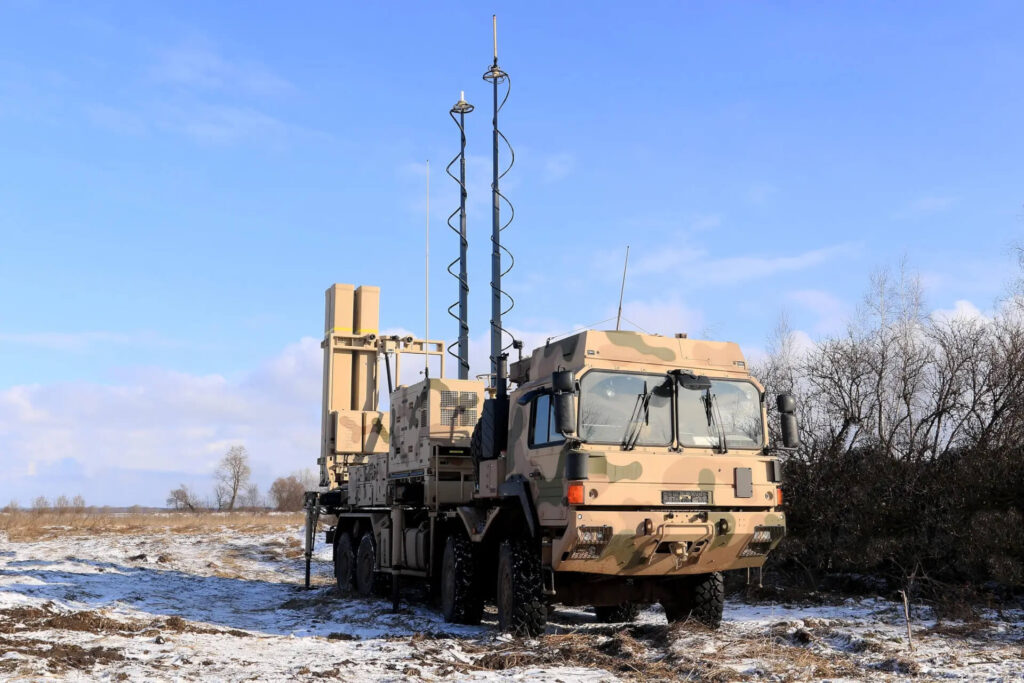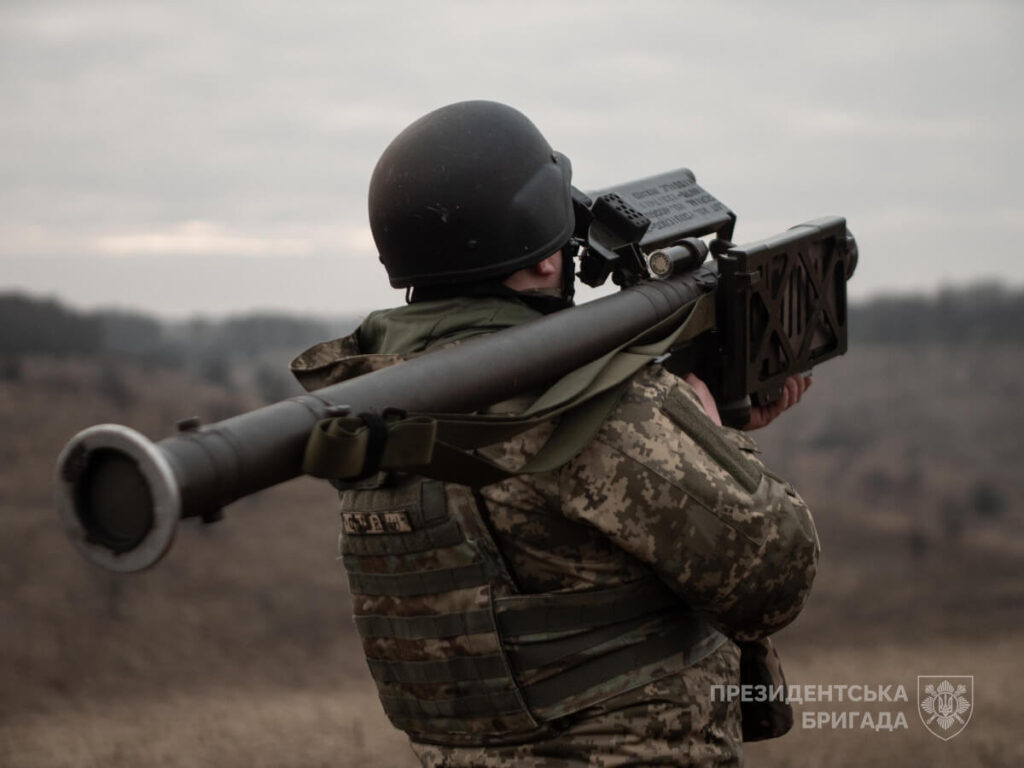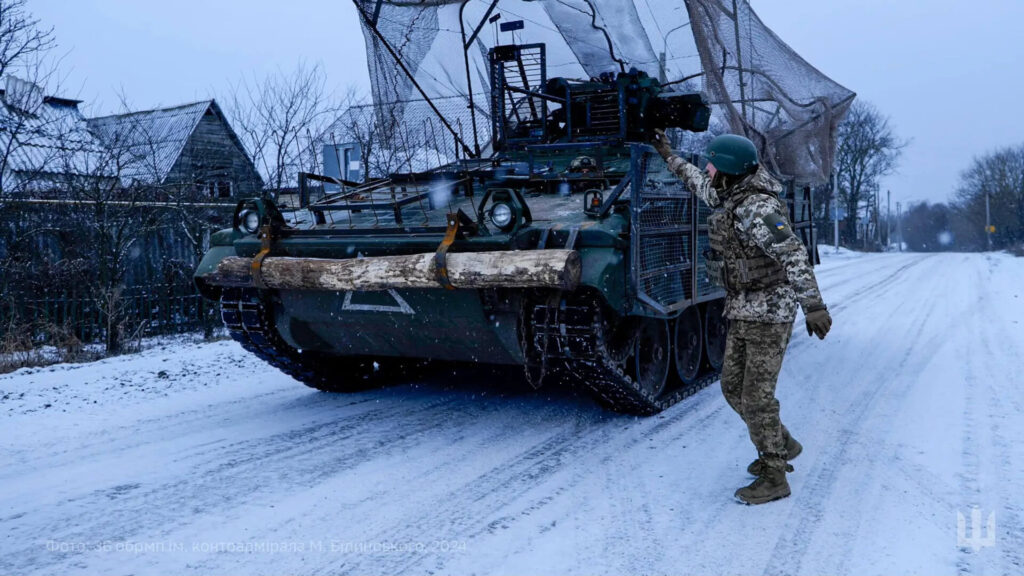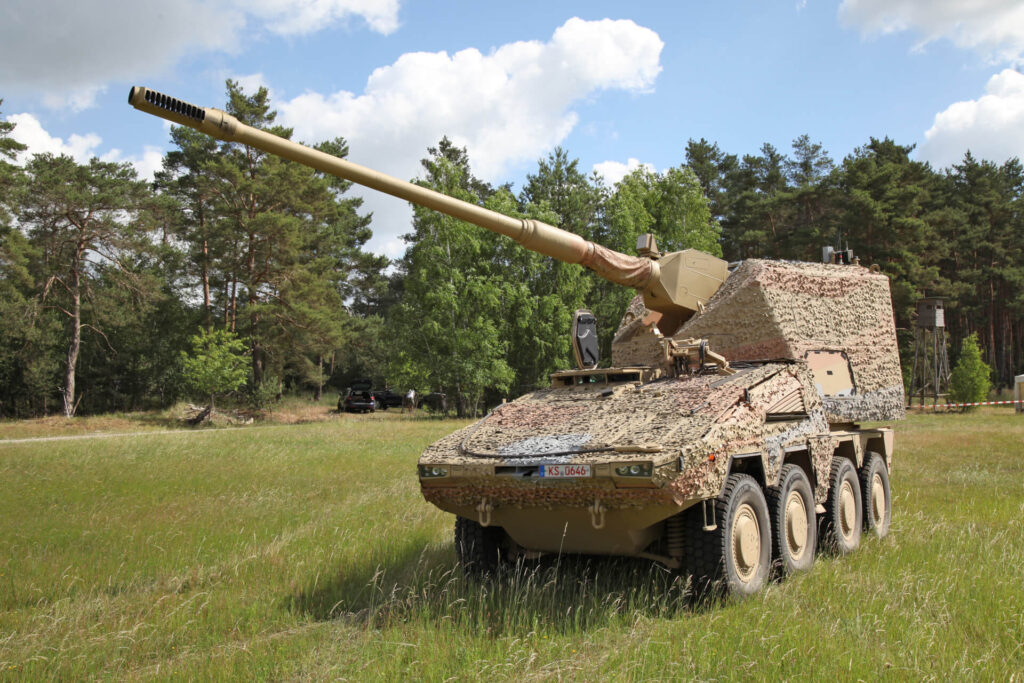The Ukraine Defence Contact Group (UDCG) met for the first time on the 11th of April 2025 at the NATO headquarters in Brussels under British-German leadership to discuss the current situation and future support for Ukraine.
As always, eyes from all over the world watched the UDCG meeting hopefully, as meetings of this format are usually used to publicly announce new military aid packages.
Following the approval of more than €11 billion in additional funds for the military support of Ukraine until 2029 by the Bundestag’s Budget Committee in mid-March, many eyes have been on the German Minister of Defence, Boris Pistorius.
As expected, the hopes of many observers were not disappointed. As early as in the morning, the German Ministry of Defence announced the content of a new military aid package, the value of which I would estimate at around €1 billion.
According to the German Ministry of Defence, the package contains the following weapons systems and ammunition, which are to be delivered to Ukraine this year.
- 4 IRIS-T air defence systems including 300 missiles
- 300 reconnaissance drones
- 120 MANPADS
- 25 Marder IFVs
- 15 Leopard 1A5 MBTs
- 14 artillery systems including around 100,000 artillery shells
- 100 ground surveillance radars
- 30 MIM-104 Patriot missiles
It was also announced that the Ministry of Defence is also planning for the medium and long term and is therefore currently entering into agreements that will result in the delivery of further IRIS-T systems in the coming years. The delivery of 1,100 ground surveillance radars in the future is also already on the cards.
As always, I would like to have a closer look at the announced assistance for you.
Air defence
The fact that hardly any other country in the world does more in the area of air defence than Germany can also be seen in this package.
Urgently needed IRIS-T systems
Four additional “IRIS-T air defence systems” are to be delivered to Ukraine this year, which will be supplemented by a comprehensive ammunition package of 300 missiles.

Regarding the “systems”, a small explanation in advance: For the rest of the article, I will use the technical term “fire unit”.
According to the Ministry of Defence, these are air defence systems with different ranges, which confirms that these are by no means four complete fire units, but a maximum of three medium-range IRIS-T SLM fire units and at least two additional short-range IRIS-T SLS launchers.
After all, it is known that the German government advertises two IRIS-T SLS launchers as one IRIS-T SLS system, even though it is not a system at all.
The launchers cannot operate without the additional components of an IRIS-T SLM fire unit, such as the TRML-4D air surveillance radar or the Tactical Operations Centre (TOC), which is why in Ukraine two IRIS-T SLS launchers are always integrated into every IRIS-T SLM fire unit supplied by Germany.
It is therefore likely that in the end only two complete IRIS-T SLM fire units will be provided out of four promised air defence systems, in which four additional IRIS-T SLS launchers will be integrated.
A bit of a cheat pack, so to speak, but that doesn’t make the delivery itself any less important. I am only criticising the public marketing as four complete fire units.
If we therefore assume that two additional IRIS-T SLM fire units and four additional IRIS-T SLS launchers are to be delivered this year, the current status is that a total of five IRIS-T SLM fire units and ten IRIS-T SLS launchers will be delivered this year, of which two IRIS-T SLS launchers were already delivered in February 2025.
The likely re-announcement of MANPADS
In addition, 120 MANPADS are to be delivered, of which Germany had already delivered up to 3,200 at the beginning of the Russian full-scale invasion of Ukraine.
Even though the German Ministry of Defence does not provide any information about the exact model, I am very sure that these are modern FIM-92 Stinger MANPADS, of which a total of 500 were donated from Bundeswehr stocks already in 2022.

In fact, Minister of Defence Boris Pistorius already promised the delivery of FIM-92 Stinger MANPADS at a UDCG meeting in September 2024, even if this seems to have been largely lost in the reporting with me as an exception.
The German government’s list, which documents the military support already provided and pledged to Ukraine, also does not include the pledge made in September 2024.
Although he did not provide any further details at the time, it should now be clear that Germany will deliver 120 FIM-92 Stinger MANPADS to Ukraine this year.
A small ammunition package for MIM-104 Patriot
We are concluding the area of recently pledged air defence with a small package of ammunition for the five or six MIM-104 Patriot fire units currently deployed in Ukraine, of which Germany has provided a total of three.
According to Minister of Defence Boris Pistorius, it is about a total of 30 missiles from Bundeswehr stocks that may already have been delivered. Unfortunately, Pistorius was unclear about this in his press statement.
In any case, the delivery should be completed within a few days at the latest, as there is a serious shortage of ammunition in Ukraine and fortunately the missiles do not have to be ordered and produced first.
With the new pledge, Germany has delivered a total of 358 missiles from Bundeswehr stocks, which represents a significant proportion of the total reserves available before 2023.
Armoured vehicles
Let us now leave air defence and turn briefly to the few armoured combat vehicles that were promised last Friday.
According to the press release from the German Ministry of Defence, it is about 25 Marder IFVs and 15 Leopard 1A5 MBTs, which are to be delivered to Ukraine in the coming weeks and months.

Unfortunately, no further information is known beyond the quantities. For example, we currently do not know whether the promised infantry fighting vehicles come from Bundeswehr stocks, which would make a delivery in the next few weeks likely, or whether Rheinmetall has received a new order, which would make a delivery possible only from next quarter.
But one thing is crystal clear. There are hardly any real reserves left, and these numbers can only compensate for a part of the Ukrainian army’s losses.
There can be no talk here of an actual increase in Ukrainian capabilities, which would be highly desirable. The only way to achieve an actual increase in capabilities is to conclude long-term contracts, for example for the delivery of newly produced Lynx or CV 90 IFVs.
Artillery
Artillery is another of Germany’s main areas of support for Ukraine in the form of military equipment. Germany is one of the world’s main suppliers of ammunition to Ukraine and last year, for example, financed and supplied more than 300,000 155mm shells.
In addition, hardly any other country provides Ukraine with new artillery systems in the long term like Germany. It was already clear in 2024 that Germany would continue to supply modern RCH 155 wheeled howitzers in 2028 and possibly even in 2029.
It should therefore come as no surprise to anyone that the package presented on Friday also includes additional artillery.
This year, 14 additional artillery systems with a further 100,000 artillery shells are to be delivered. Fortunately, we have more background information here than we did in the case of the armoured combat vehicles.
In January 2025, SPIEGEL reported about a list of military equipment worth around €3 billion that Germany would like to additionally finance for Ukraine this year. This list will be financed with the funds made available for this year in March.
According to SPIEGEL, there were ten wheeled howitzers on the list. According to information I have received from defence industry circles, these appear to be RCH 155s produced by KNDS.

In fact, I have to admit that I had already explained in detail in a 400+ word section of this article why the artillery systems in question could only be 2S22 Bohdana produced in Ukraine, until I received further information shortly before the publication of this article, which rendered my very detailed explanation null and void. That’s unfortunate, but I guess that’s how journalism works sometimes.
Back to the announcement made on Friday. In fact, the information that additional RCH 155s will be produced and delivered matches both the fact that the SPIEGEL article referred to wheeled howitzers and a statement made a few weeks ago by Minister of Defence Boris Pistorius, according to which additional PzH 2000 or RCH 155 self-propelled howitzers could be financed with the funds approved in March.
In total, Germany should therefore deliver 20 RCH 155s to the Ukrainian army this year, as six of these artillery systems were already scheduled for delivery this year before the recent pledge was announced. These had already been ordered in 2022.
In all likelihood, however, this will not be possible in its entirety. I have heard from industry circles that it is currently expected that only 14 systems can be delivered with certainty.
This means that only 8 of the 14 additionally announced RCH 155 artillery systems will be delivered this year, which is why the remaining systems from the package presented on Friday will have to be delivered at a later date.
However, despite this, the first RCH 155 should be delivered this month if the delivery has not already taken place. After all, KNDS Germany CEO Ralf Ketzel announced in an interview with hartpunkt five months ago that the first delivery would be made in April 2025.
Finally, let’s have a brief look at the pledged ammunition. According to the Ministry of Defence, a total of around 100,000 artillery shells are to be delivered.
Although the exact calibre is not disclosed (122mm, 155mm etc.), it is likely to be 155mm shells if we assume that the ammunition is to be supplied to go with the financed howitzers.
The scope of the new pledge is probably even somewhat understated. Although the Ministry of Defence speaks of around 100,000 shells, this could actually be up to 130,000 shells.
The press release states that this new pledge will increase the total scope of deliveries this year to almost 500,000 shells. A fact that was already made public by the Ministry of Defence on the 3rd of April 2025.
However, in February 2025 the Ministry of Defence was still reporting in “Nachgefragt”, a video format published on YouTube, that 370,000 shells would be delivered this year. The actual difference to this is therefore not around 100,000 shells, but up to 130,000 shells.
Miscellaneous
Finally, we turn to the remaining equipment that was publicly pledged on Friday. This year, 300 additional reconnaissance drones and 100 ground surveillance radars are to be delivered.
Unfortunately, I can’t say anything about the radar units, but I think it’s likely that the reconnaissance drones are Vector eVTOL UAVs from the German manufacturer Quantum Systems.

Germany has already delivered 549 of these drone systems to Ukraine, while a further 21 are to follow in the short term. According to the current information, this would be the end of deliveries for now, although the Ukrainian Ministry of Defence requested the provision of more than 800 additional Vector drones in 2025 already around a year ago.
However, due to the tight budget situation in recent months, no further announcements have been made to date.
In my opinion, an additional, comprehensive order would be absolutely necessary. Quantum Systems is a German exemplary company when it comes to supporting Ukraine.
Since last year, in Ukraine, drone pilots have not only been trained and damaged drone systems repaired, but new drones have also been manufactured there. This required investments totalling millions of euros.
I therefore strongly assume that the reconnaissance drones in question are Vector eVTOL UAVs manufactured by Quantum Systems. If the deliveries actually come to an end and no additional ones are financed, this would be an embarrassment in my eyes.
This brings us to the end of the package and my article. To summarise, it can be said that although the Ministry of Defence may have cheated a little in the announcement, the relevance of the weapon systems and ammunition listed is by no means diminished as a result.
In particular, the additional air defence systems, including the missiles and artillery shells, will make a noticeable difference both in protecting Ukrainian cities and on the front line.
I would also like to point out once again that the package announced on Friday has utilised a maximum of half of the additional funds available for 2025 since March, which is why we can certainly expect another package or two in the coming months.
If you liked this post, consider following me on X, Bluesky, or Telegram. If you like, you can also leave me a tip on Ko-fi.


